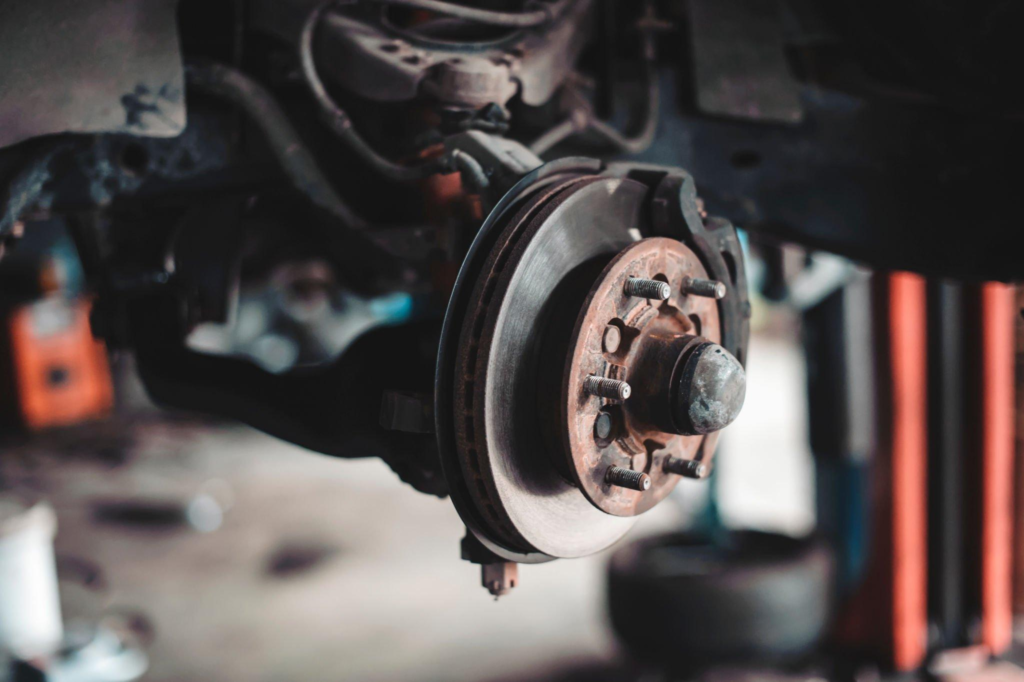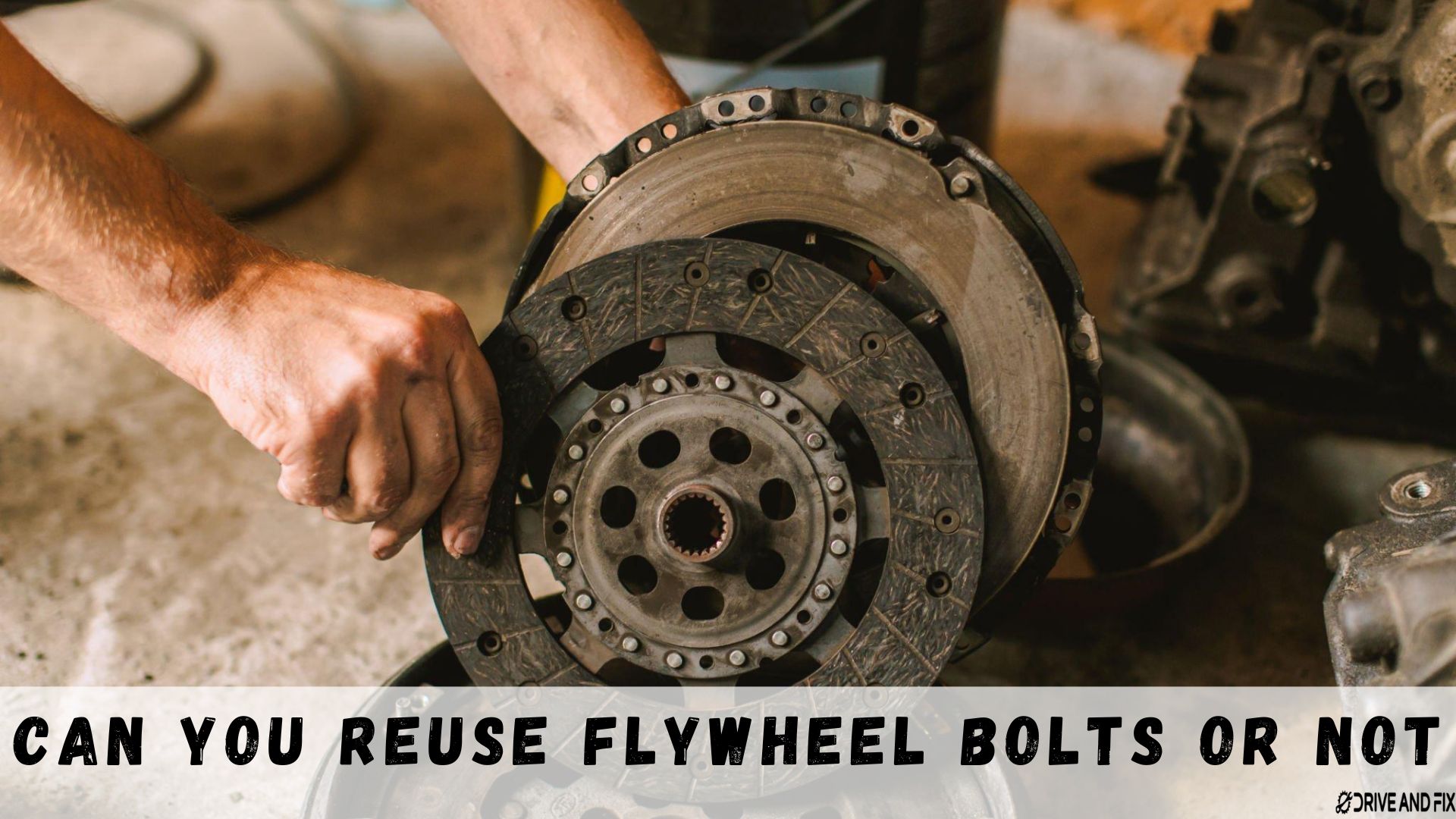A flywheel bolt secures the flywheel to the crankshaft in an internal combustion engine, enabling the engine to generate and transfer power to the transmission and, ultimately, the wheels. It is structured to withstand high levels of torque and stress, as it is subject to intense forces during engine operation. It’s made of high-strength materials, such as alloy steel or titanium, and is threaded to provide a secure and precise fit into the crankshaft.
Reusing old, worn, or damaged bolts can compromise the safety and performance of the engine, potentially leading to catastrophic failure or damage. Here we will discover can you reuse flywheel bolts or not. Read on to learn more about the best practices for reusing flywheel bolts and when it’s not recommended.
Can You Reuse Flywheel Bolts Or Not

Before moving on you need to establish whether your flywheel bolt is reusable or the Torque to yield one. Torque to yield is not meant to be re-used, and your only option is to replace it. For reusable flywheel bolts, you may need to consider several factors, which include:
- Age and wear of the bolts: Flywheel bolts are subject to wear and stress over time, which can compromise their strength and integrity. As such, assessing the age and wear of the bolts before reusing them is necessary.
- Exposure to high temperatures and stresses: The bolts are constantly under high temperatures and pressures, which causes them to expand and contract and contribute to their wear. Condition of the threads and head of the bolts. The lines and head of the bolts are critical components of their strength and reliability. Any damage or wear to these areas can compromise the bolts’ ability to hold the flywheel in place, potentially leading to engine damage or failure.
- Manufacturer recommendations: Consider the manufacturer’s recommendations regarding reusing flywheel bolts. In a few cases, manufacturers may recommend against reusing old bolts and instead recommend the Use of new bolts for optimal safety and performance.
Torque to Yield vs Reusable Flywheel Bolts

TTY flywheel bolts are designed to stretch slightly as they are tightened to their specified torque, which helps to ensure a precise and consistent clamping force on the joint. This stretching causes the bolt to yield slightly, hence the name “torque to yield.” TTY bolts are typically used in modern engines, and you must replace them each time you remove them, as their yield properties diminish after they have stretched once.
On the other hand, reusable flywheel bolts are designed to be reused multiple times without losing their strength or integrity. These bolts are typically made of high-strength materials, such as alloy steel or titanium, and withstand high levels of torque and stress. They are primarily used in older engines or in situations where the manufacturer recommends their reuse.
When making this important decision, consider the manufacturer’s recommendations and the specific requirements of the engine in question. TTY bolts provide a precise and consistent clamping force only once, while reusable bolts can be used multiple times; nonetheless, they may require additional inspection and testing to ensure their strength and integrity over time.
Read Also: Can I Use 5w20 Instead of 0w20 in My Car?
Why it is Risky to Reuse Flywheel Bolts

Reusing flywheel bolts may seem cost-effective and convenient, but you must also understand the potential risks and consequences of doing so.
Over time, flywheel bolts weaken or damage, compromising their strength and ability to hold the flywheel in place securely. Reusing old bolts increase the risk of failure and compromises the engine’s safety and reliability.
If a reused flywheel bolt fails, it can lead to catastrophic engine damage or failure, potentially resulting in expensive repairs or even a total engine replacement.
In high-performance or heavy-duty applications, the risks of reusing flywheel bolts are even greater, as the bolts are subject to more stress and wear. In these cases, it is especially critical to use new, high-quality bolts to ensure the safety and performance of the engine.
Advantages of Reusable Flywheel Bolts Over TTY
Reusable flywheel bolts offer several advantages over torque-to-yield (TTY) bolts:
- Cost-effectiveness: You can use them multiple times, making them a more cost-effective option in the long run compared to TTY bolts, which must be replaced upon removal.
- Durability: They are designed to be stronger and more durable than TTY bolts. Their material is from high-strength materials, such as alloy steel or titanium, which withstand high levels of torque and stress.
- Convenience: It is more convenient to work with reusable bolts than TTY bolts which saves time and effort in situations where you have to remove and reinstall the flywheel multiple times.
- Availability: The bolts are often more widely available than TTY bolts, as they are used in a wider range of engines and applications.
Signs of Worn-Out Flywheel Bolts
- Looseness or vibration: If the flywheel bolts are loose or have become worn out, it can cause the flywheel to wobble or vibrate during engine operation. This can be felt as shaking or vibration throughout the vehicle, especially during acceleration.
- Squeaking or rattling noises: Worn out flywheel bolts may cause the flywheel to rub against other engine components, creating a squeaking or rattling noise that is especially noticeable at idle or low speeds.
- Difficulty shifting gears: Old flywheel bolts cause the flywheel to move out of position, which makes it challenging to shift gears smoothly or to engage the clutch properly.
- Damage to the bolt head or threads: You will see signs of wear or damage on the bolt head or lines Including cracks, corrosion, or other forms of visible damage.
How far to drive before retorque?
The recommended distance to drive before retorquing can vary depending on the specific component being worked on and the manufacturer’s recommendations. For example, when installing new wheels or changing a tire, it is generally recommended to retorque the lug nuts after driving the vehicle for about 50-100 miles (80-160 kilometers). This allows for the lug nuts to settle and the wheels to properly seat on the hub.
For other components, such as engine bolts or suspension components, the recommended distance may be different. It is important to consult the manufacturer’s specifications or a professional mechanic for guidance on when to retorque these components.
Does a flywheel need to be torqued?
Yes, a flywheel does need to be torqued to the manufacturer’s specifications when it is installed in an engine.
The flywheel is typically bolted to the engine’s crankshaft using a set of bolts or studs. These bolts need to be tightened to a specific torque value in order to ensure that the flywheel is properly secured to the crankshaft. If the flywheel is not torqued to the correct specifications, it can cause a range of issues such as engine vibration, excessive wear on the flywheel or crankshaft, and even engine damage.
Final Thoughts
The question of whether can you reuse flywheel bolts depends on whether you have reusable or Torque to yield. The choice between these options depends on the engine’s specific requirements and the manufacturer’s recommendations. Carefully weigh the benefits and risks of each option and make an informed decision based on the engine’s needs and the application’s demands.
Our Popular Post:
What If I Accidentally Put Premium Gas Into My Car?
Is it OK to Sit in Car with AC On? Here’s the Answer
How Often To Change Engine Air Filter Toyota?


